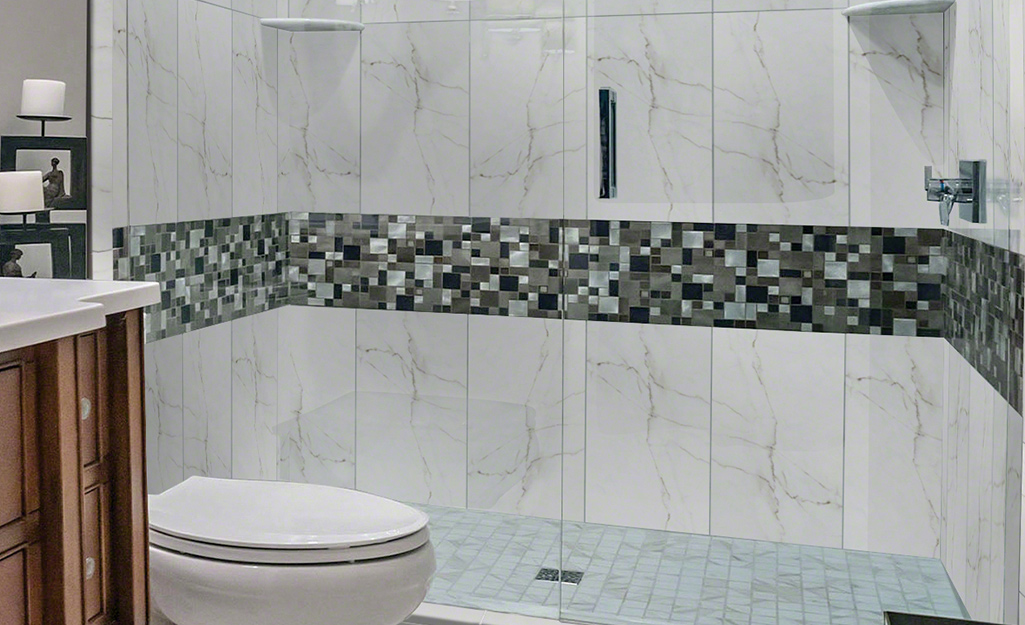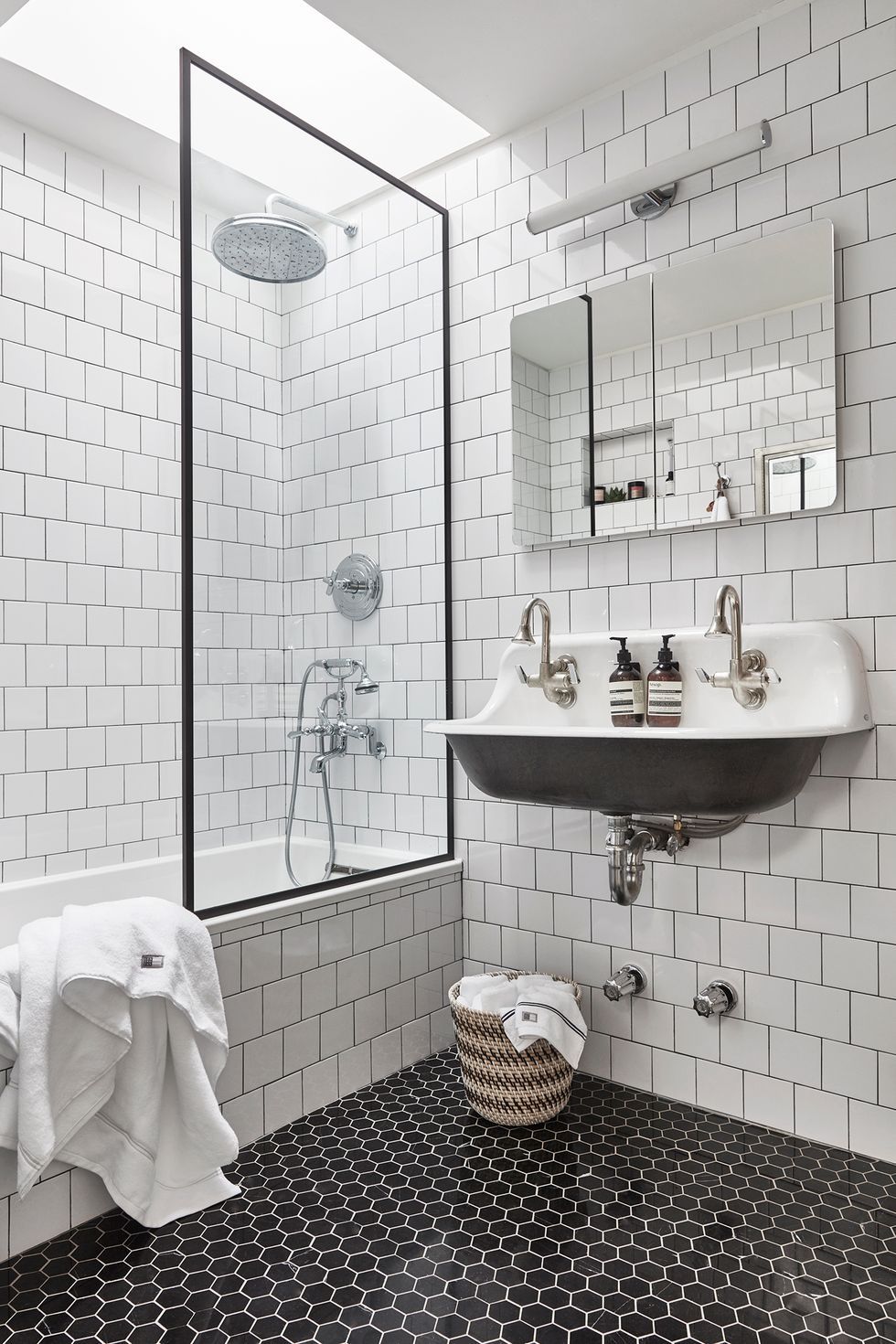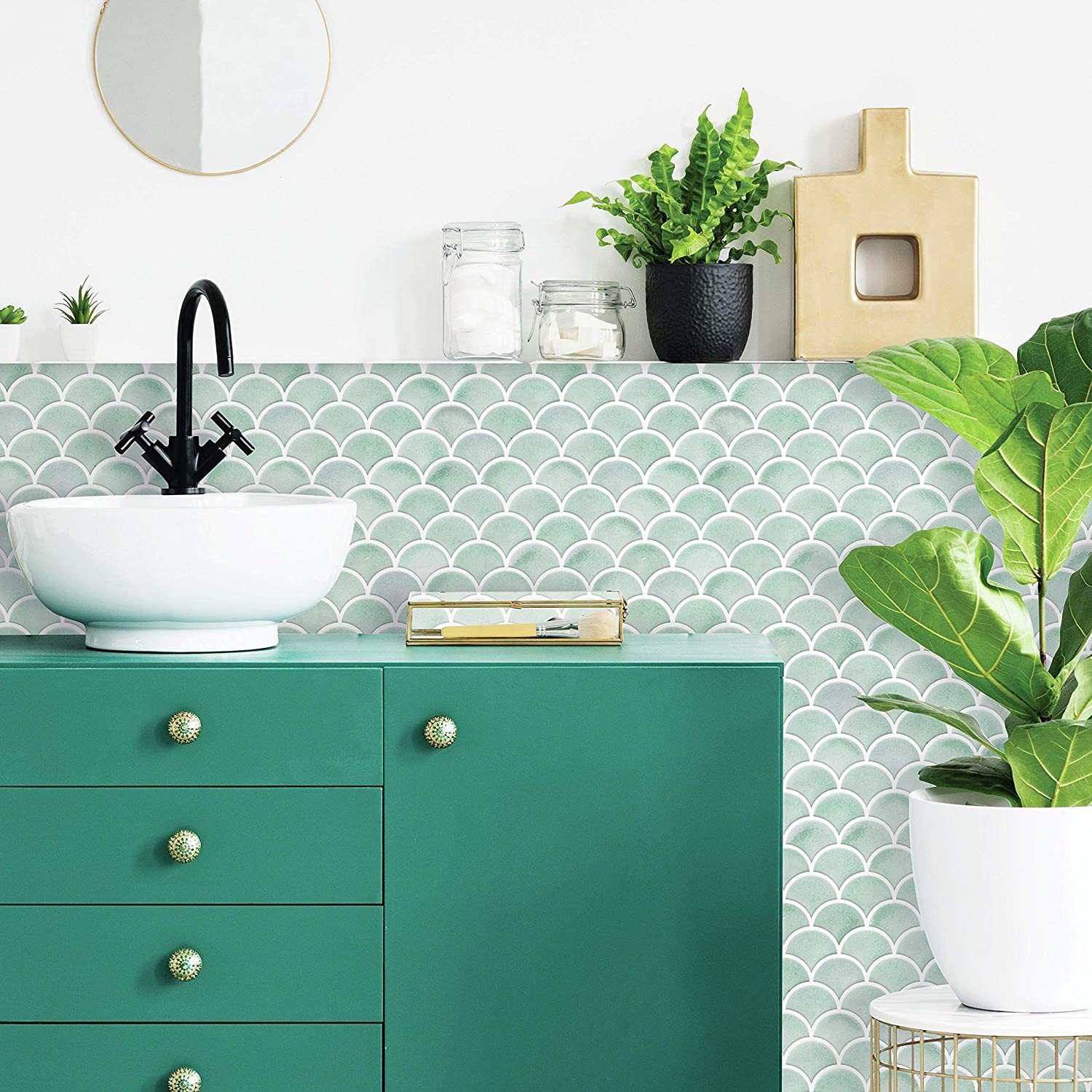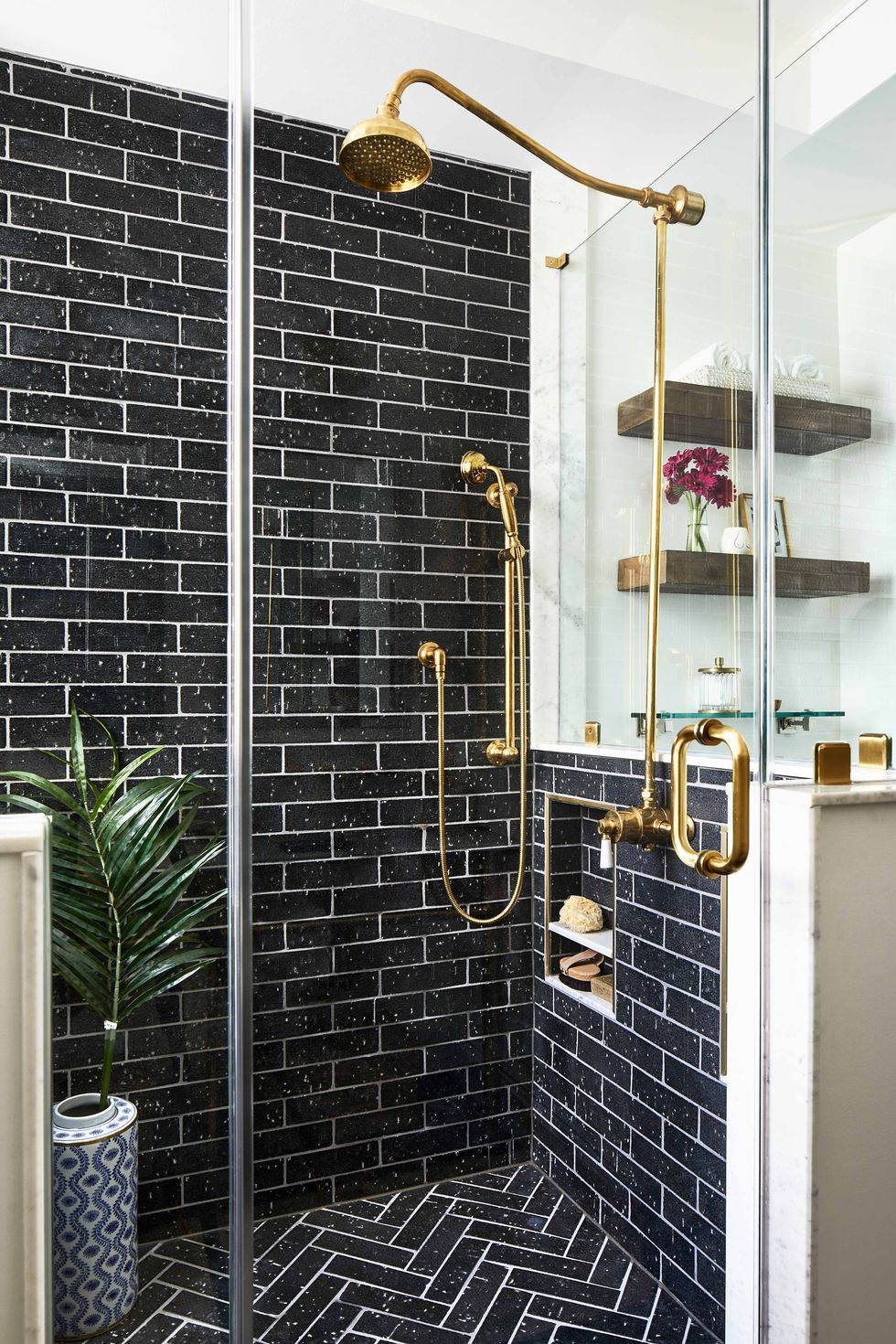Bathroom tile designs play a crucial role in defining the overall look and feel of the space. From creating a spacious ambiance with large format tiles to adding intricate details with mosaic designs, the possibilities are endless. Today we will discuss different bathroom tile design ideas that can transform your bathroom into a stylish and functional sanctuary.
Large Format Tiles for a Spacious Look
Large format tiles are a popular choice for those looking to create a sense of space and openness in their bathroom. These tiles, which can measure up to 48 inches or more, reduce the number of grout lines, resulting in a cleaner and more expansive appearance.
One of the main advantages of large-format tiles is their ability to make small bathrooms feel larger. Fewer grout lines create a seamless look, drawing the eye across the surface without interruption. This can be particularly effective in compact bathrooms where every inch counts.
In addition to enhancing the sense of space, large-format tiles also offer practical benefits. They are easier to clean due to the reduced amount of grout, making maintenance simpler. This is especially beneficial in a bathroom setting where moisture and mildew can be a concern.
Large format tiles come in a variety of materials, including porcelain, ceramic, and natural stone. Porcelain and ceramic options are durable and water-resistant, making them ideal for bathroom floors and walls. Natural stone tiles, such as marble or limestone, add a touch of luxury and elegance.
When selecting large format tiles, consider the overall color scheme of your bathroom. Lighter colors can enhance the sense of space and brightness, while darker tones can create a more dramatic and intimate atmosphere. Additionally, the finish of the tiles, whether matte or glossy, can impact the overall aesthetic.
Large format tiles can be used in various applications within the bathroom, from flooring to shower walls and backsplashes. Their versatility and modern appeal make them a popular choice for contemporary and minimalist bathroom designs, creating a sleek and sophisticated look.
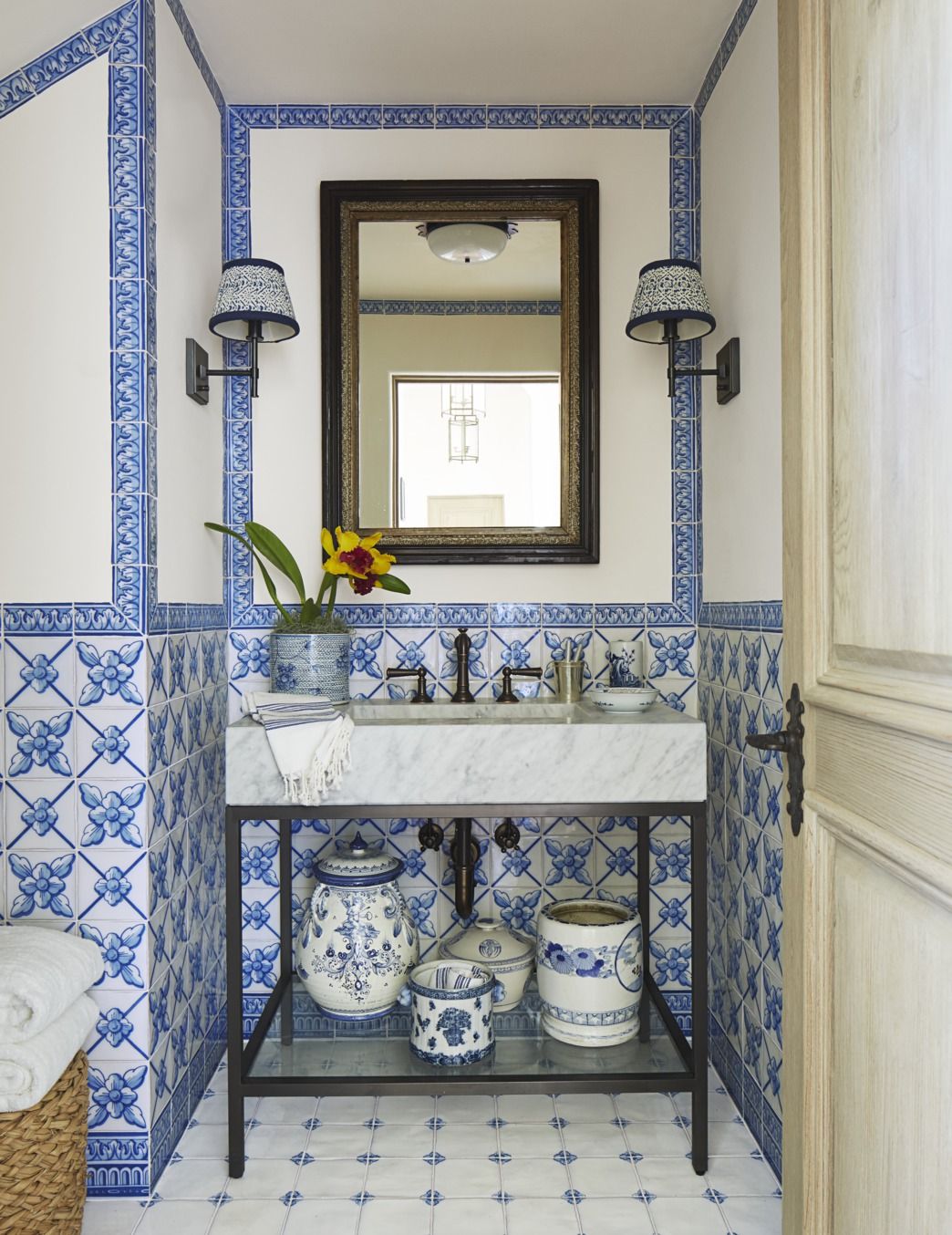
Geometric Tile Patterns
Geometric tile patterns bring a modern and artistic flair to bathroom design. These patterns, which include shapes like hexagons, diamonds, and chevrons, can add visual interest and a unique character to the space.
Hexagon tiles, for instance, have become a favorite in modern bathroom design. Available in various sizes and colors, they can be used to create intricate patterns on floors and walls. The honeycomb pattern formed by hexagon tiles adds a touch of sophistication and can be both subtle and bold, depending on the chosen color palette.
Chevron and herringbone patterns are other popular geometric designs. These patterns involve arranging rectangular tiles in a zigzag formation, creating a dynamic and eye-catching look. Chevron patterns have a continuous zigzag, while herringbone patterns create a broken zigzag effect. Both are excellent choices for adding movement and texture to bathroom walls or floors.
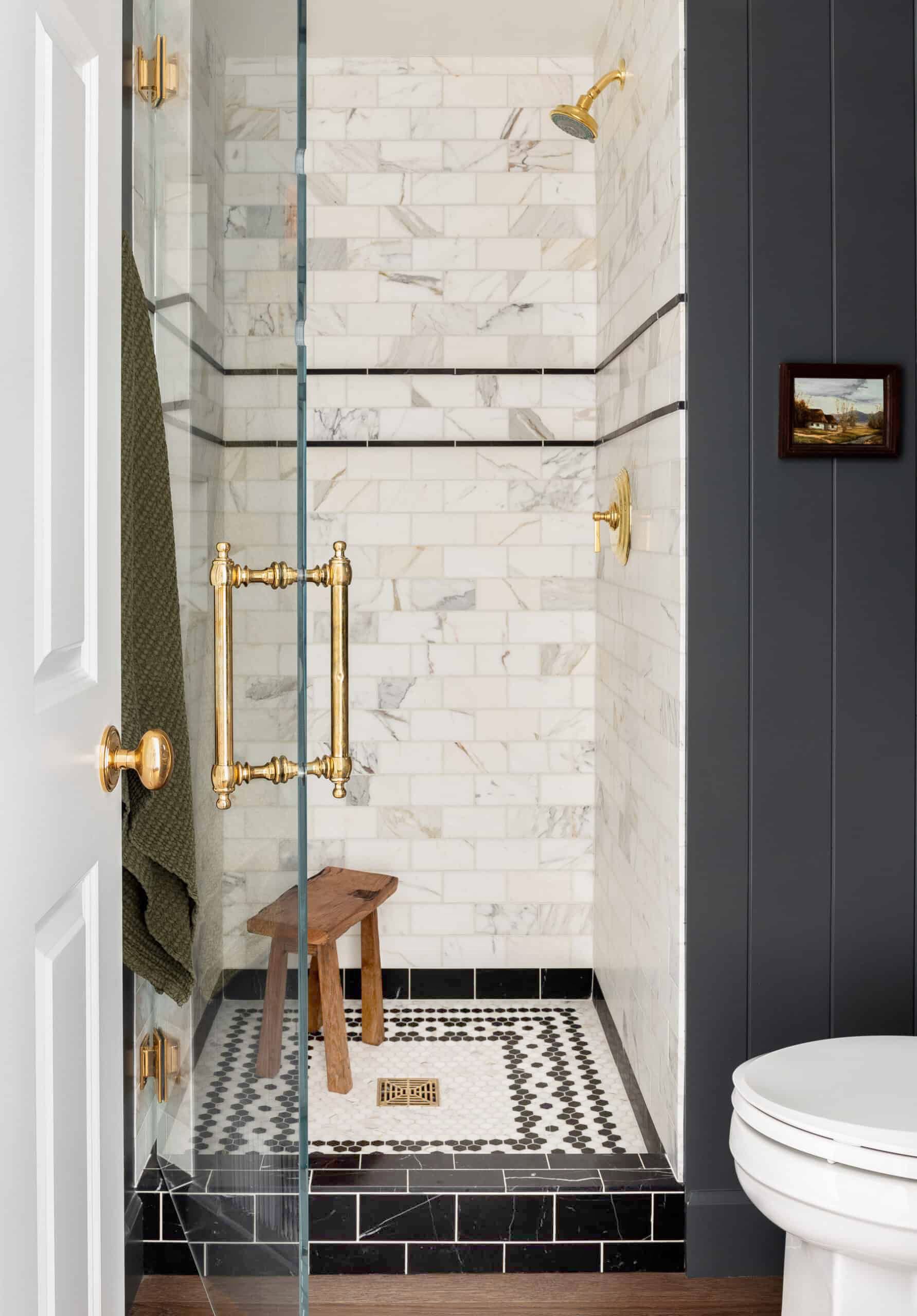
Geometric tile patterns can also be created using mosaic tiles. Small mosaic pieces in geometric shapes can be used to craft intricate designs and borders. This allows for a high level of customization and creativity, enabling you to design a truly unique bathroom.
When incorporating geometric patterns, balance is key. While these patterns can add a lot of visual interest, using them excessively can overwhelm the space. Consider using geometric tiles as an accent, such as on a feature wall or as a backsplash, and pairing them with more neutral, solid-colored tiles.
The choice of color is crucial in geometric tile patterns. Monochromatic schemes can create a sleek and modern look, while contrasting colors can make the patterns stand out and add a playful element. Metallic or iridescent tiles can also be used to highlight geometric patterns and add a touch of glamour.
Geometric tile patterns are versatile and can complement various design styles, from contemporary to vintage. Their ability to create visual interest and define areas within the bathroom makes them a valuable tool in interior design, allowing you to personalize and enhance your bathroom space.
Subway Tile Variations and Layouts
Subway tiles are a classic choice for bathroom design, known for their simple, rectangular shape and versatile appeal. Originally used in New York City subways in the early 20th century, these tiles have become a staple in both traditional and modern bathrooms.
The standard subway tile is a 3×6-inch rectangle, typically installed in a brick or offset pattern. This classic layout is timeless and works well in various bathroom styles, from vintage to contemporary. The clean lines and simplicity of subway tiles make them a perfect backdrop for other design elements.
One popular variation of the traditional subway tile layout is the vertical stack. Instead of the horizontal offset pattern, tiles are stacked vertically, creating a modern and sleek look. This layout can add height to the room, making it feel taller and more spacious.
Another interesting layout is the herringbone pattern. This involves arranging subway tiles in a zigzag pattern, similar to the traditional herringbone wood floor design. The herringbone layout adds movement and texture to the walls, creating a dynamic and eye-catching effect.
For those looking to add a touch of elegance, beveled subway tiles are an excellent option. These tiles have a slightly angled edge, adding depth and dimension to the surface. Beveled tiles are particularly effective in creating a luxurious and refined look.
Subway tiles also come in a variety of colors and finishes. While white is the classic choice, colored subway tiles can add a playful or dramatic touch to the bathroom. Glossy finishes reflect light and make the space feel brighter, while matte finishes offer a more subdued and contemporary look.
Grout color plays a significant role in the overall appearance of subway tiles. Matching grout creates a seamless look, while contrasting grout highlights the tile pattern and adds definition. Colored grout can also be used to add an unexpected pop of color and enhance the design.
Subway tiles are a versatile and timeless choice for bathroom design. Their simplicity allows for endless creativity in layout and color, making them suitable for a wide range of styles and preferences. Whether you stick to the classic brick pattern or experiment with new layouts and finishes, subway tiles can create a beautiful and functional bathroom space.
Mosaic Tile Designs and Applications
Mosaic tiles are a fantastic way to add intricate detail and vibrant color to your bathroom. These small tiles, often made of glass, ceramic, or stone, are mounted on mesh sheets for easy installation and can be used to create stunning patterns and designs.
One of the primary advantages of mosaic tiles is their versatility. They can be used on floors, walls, shower enclosures, and even as decorative accents. This makes them an excellent choice for adding a touch of artistry and personality to various areas of the bathroom.
Mosaic tiles come in a wide range of colors, shapes, and materials. Glass mosaics, for example, offer a luminous and reflective quality that can make the bathroom feel brighter and more spacious. Stone mosaics, on the other hand, provide a natural and earthy texture, adding warmth and a rustic charm.
Creating a mosaic tile backsplash is a popular application. The backsplash serves as a focal point and can be designed with intricate patterns or simple, repeated shapes. This not only protects the wall from water damage but also adds a decorative element that enhances the overall design of the bathroom.
Mosaic tiles are also ideal for creating feature walls. A mosaic-tiled feature wall can add depth and visual interest, making a bold statement. Whether you choose a monochromatic scheme or a colorful pattern, a mosaic feature wall can transform the look and feel of your bathroom.
In the shower, mosaic tiles can be used to create luxurious and spa-like environments. Using mosaic tiles on shower floors provides a non-slip surface due to the numerous grout lines, while walls adorned with mosaics add elegance and style. Creating niche areas with mosaic tiles can also add functionality and beauty to the shower.
Another creative application of mosaic tiles is in decorative borders and accents. Adding a mosaic border around a mirror, along the edge of the bathtub, or as a trim on walls can elevate the design and add a custom touch. These small details can make a significant impact on the overall aesthetic.
Mosaic tile designs offer endless possibilities for customization and creativity in bathroom design. Their ability to add color, texture, and intricate patterns makes them a versatile choice for various applications. Whether used sparingly or extensively, mosaic tiles can enhance the beauty and functionality of your bathroom.
Natural Stone Tile Options
Natural stone tiles bring a sense of luxury and timeless beauty to bathroom design. Each piece of stone is unique, offering a variety of textures, colors, and patterns that can create a stunning and elegant bathroom.
Marble is one of the most popular choices for natural stone tiles. Known for its classic beauty and veining patterns, marble can add a touch of sophistication and opulence to the bathroom. Available in a range of colors, from pristine white to deep black, marble tiles can be used on floors, walls, and countertops.
Travertine is another excellent option for those seeking a natural stone look. This sedimentary rock features warm, earthy tones and a distinctive porous texture. Travertine tiles can add a rustic charm and a sense of warmth to the bathroom. They are available in various finishes, including polished, honed, and tumbled, each offering a different look and feel.
Slate tiles offer a rugged and natural appearance, with a rich palette of colors ranging from deep blues and greens to rust and gray. The textured surface of slate provides excellent slip resistance, making it a practical choice for bathroom floors. Slate’s natural variations in color and texture create a dynamic and visually appealing surface.
Limestone is a softer stone that provides a subtle and refined look. Its muted colors and smooth texture make it an ideal choice for creating a calm and serene bathroom environment. Limestone tiles can be used on floors, walls, and even as decorative accents, adding a touch of elegance and simplicity.
Granite tiles are known for their durability and resistance to moisture, making them a practical choice for bathroom surfaces. Granite comes in a wide range of colors and patterns, from subtle speckles to dramatic veining. This versatility allows for various design options, from countertops to shower walls and floors.
When using natural stone tiles, it is important to consider sealing and maintenance. Natural stone is porous and can be susceptible to staining and water damage if not properly sealed. Regular sealing and cleaning with appropriate products will help maintain the beauty and longevity of the stone.
Natural stone tiles offer a timeless and luxurious option for bathroom design. Their unique beauty and variety of textures and colors can create a sophisticated and elegant space. Whether you prefer the classic look of marble, the rustic charm of travertine, or the rugged beauty of slate, natural stone tiles can transform your bathroom into a stunning retreat.
Wood-look Tile for Bathrooms
Wood-look tiles are an excellent choice for those who love the warmth and natural beauty of wood but require the durability and moisture resistance of tile. These tiles are designed to mimic the appearance of real wood, offering the best of both worlds for bathroom design.
One of the primary benefits of wood-look tiles is their ability to withstand moisture and humidity. Unlike real wood, which can warp and deteriorate in wet environments, wood-look tiles are made from porcelain or ceramic, making them ideal for bathroom floors and walls.
Wood-look tiles come in a variety of styles, colors, and textures, allowing you to choose the perfect look for your bathroom. Whether you prefer the rustic charm of reclaimed wood, the sleek elegance of dark hardwood, or the light and airy feel of whitewashed planks, there is a wood-look tile to suit your taste.
These tiles can be installed in various patterns to enhance the wood effect. The traditional plank layout, with tiles arranged in a staggered pattern, creates a classic wood floor look. Herringbone and chevron patterns add a touch of sophistication and visual interest, while a straight lay pattern offers a more contemporary feel.
Wood-look tiles are also versatile in their applications. They can be used on bathroom floors to create a warm and inviting atmosphere, or on walls and shower enclosures for a unique and stylish look. Using wood-look tiles on a feature wall can add depth and texture, creating a focal point in the bathroom.
Another advantage of wood-look tiles is their ease of maintenance. They are resistant to stains, scratches, and moisture, making them a practical choice for busy bathrooms. Regular cleaning with a damp mop and mild detergent is usually sufficient to keep them looking their best.
When selecting wood-look tiles, consider the size and scale of the tiles to your bathroom. Larger planks can make a small bathroom feel more spacious, while smaller tiles can add intricate detail and texture. The color and finish of the tiles should also complement the overall design scheme of the bathroom.
Wood-look tiles offer a beautiful and practical solution for incorporating the natural beauty of wood into your bathroom design. Their durability, versatility, and ease of maintenance make them an excellent choice for creating a warm and inviting space that combines style and functionality.
Patterned Cement Tiles
Patterned cement tiles, also known as encaustic tiles, are a vibrant and artistic option for bathroom design. These tiles are made by hand using a mixture of cement, pigment, and sand, resulting in a durable and colorful surface that can add a unique character to any space.
One of the main attractions of patterned cement tiles is their intricate and eye-catching designs. From traditional Moroccan and Spanish patterns to modern geometric and floral motifs, these tiles offer a wide range of styles to suit various design preferences. The bold patterns and rich colors can create a stunning focal point in the bathroom.
Patterned cement tiles are highly versatile and can be used in various applications. They are often used as flooring, where their intricate designs can add visual interest and personality. These tiles are also popular for creating feature walls or backsplashes, providing a striking backdrop that enhances the overall design of the bathroom.
The durability and longevity of cement tiles make them a practical choice for bathrooms. They are resistant to wear and tear, making them suitable for high-traffic areas. However, it is important to properly seal and maintain cement tiles to protect them from moisture and staining, especially in wet environments like bathrooms.
One of the unique aspects of cement tiles is their handmade quality. Each tile is crafted individually, resulting in slight variations in color and pattern that add to their charm and authenticity. This artisanal quality makes cement tiles a unique and distinctive choice for bathroom design.
When using patterned cement tiles, it is important to consider the overall balance and harmony of the space. While these tiles can make a bold statement, using them excessively can overwhelm the design. Consider using patterned tiles as an accent or focal point, and pairing them with more neutral and solid-colored tiles to create a balanced look.
The installation of cement tiles requires careful planning and precision. The intricate patterns need to be aligned correctly to ensure a seamless and cohesive design. Hiring a professional installer with experience in working with cement tiles can help achieve the best results.
Patterned cement tiles offer a beautiful and artistic option for bathroom design. Their vibrant colors, intricate patterns, and handmade quality can add a unique and personalized touch to the space. Whether used on floors, walls or as decorative accents, cement tiles can transform your bathroom into a stylish and visually captivating retreat.
Related Posts:
- Small Grey Bathroom Tiles
- Split Face Slate Bathroom Tiles
- How To Clean Bathroom Tiles Using Baking Soda
- Black And White Vintage Bathroom Tile
- How To Bleach Bathroom Tile Grout
- White Bathroom Tiles 200 X 300
- Extra Large Bathroom Tiles
- Bathroom Tile Ideas In Grey
- Cost Of Bathroom Tile Per Square Foot
- How To Clean Mold In Bathroom Tile

